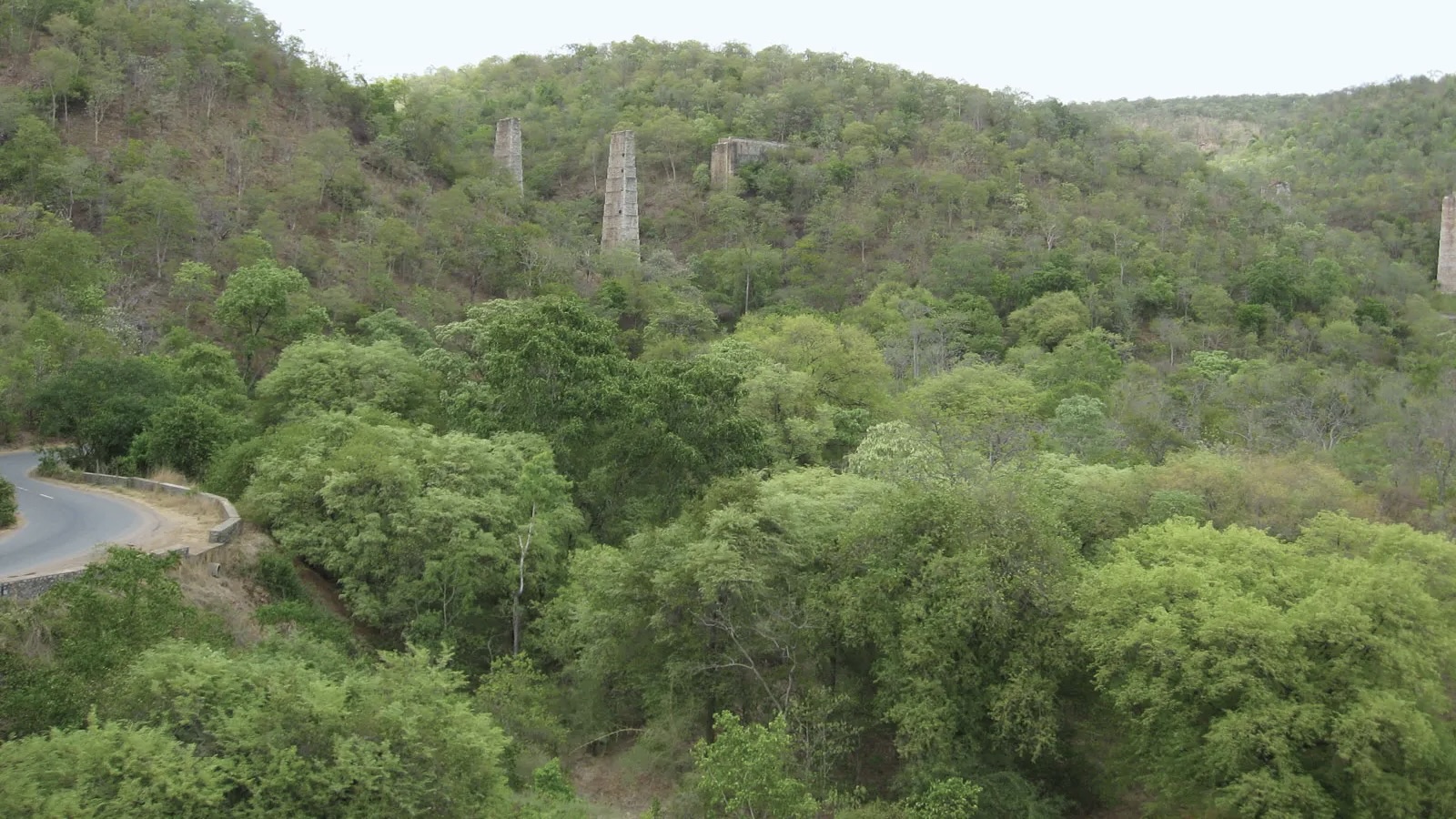The Kadapa Native Forest Restoration Project, led by the District Forest Department, aims to bring back indigenous tree species that once thrived in the region.
Published Apr 01, 2025 | 1:53 PM ⚊ Updated Apr 01, 2025 | 1:53 PM

Lush forest cover in the Nallamala Range of the Eastern Ghats, in Kadapa. (Wikimedia Commons)
Synopsis: Andhra Pradesh has launched the Kadapa Native Forest Restoration Project, a first-of-its-kind initiative focused on reviving indigenous flora in the ecologically degraded Kadapa district. Unlike traditional afforestation efforts that rely on exotic species, this project emphasises ecological restoration, biodiversity, and long-term water security by reintroducing native trees across forested and open lands.
A major environmental initiative is underway in Andhra Pradesh’s Kadapa district, where forest officials are working to revive native forests lost to decades of deforestation and land-use change.
The Kadapa Native Forest Restoration Project, led by the District Forest Department, aims to bring back indigenous tree species that once thrived in the region.
Officials say this approach goes beyond traditional afforestation, which often relies on fast-growing but non-native trees.
South First spoke to Vineet Kumar, the District Forest Officer (DFO) of Kadapa, who said the project is rooted in ecological restoration – prioritising biodiversity, long-term sustainability, and water security.
“The project is about the restoration of native forests in the Kadapa region of Andhra Pradesh. It is meant for reclaiming the forests which existed long back and are degraded now,” he said.
This is the first project of its kind in the region. Kumar said earlier efforts largely focused on increasing green cover, often with exotic species like eucalyptus and acacia.
“Earlier, most of the efforts have been on greenery,” he said. “That is not a wholesome approach to ecological restoration.”
Exotic species can disrupt soil health, outcompete native plants, and fail to support local wildlife.
Kumar cited deforestation, forest fires, shifting land use, and climate change as key drivers of forest degradation.
He said reintroducing native flora is vital, not only in forested zones but also in open and degraded lands across the district.
“The project is intended for both forest areas and outside forest areas where there is a scope of bringing back the native forests,” he added.
Native species, he explained, are those that occur naturally in a region and are best suited to support local ecosystems.
Their restoration is expected to benefit biodiversity, water conservation, and sustainable livelihoods.
“This is important as native forests have several benefits in terms of biodiversity, conservation of flora and fauna, water conservation, and maintaining the health of water bodies and sustainable community livelihood,” Kumar said.
Kadapa, which suffers from severe water scarcity and land degradation, stands to gain significantly from such an initiative.
“If the native forests are not preserved and restored, future generations will not have access to the rich biodiversity nature gave us. It is important for our survival,” he added.
Kumar acknowledged that restoring degraded forests comes with hurdles – including limited land availability, funding constraints, and low public awareness.
“There are several challenges, such as convincing people about the necessity of restoring native forests, the availability of land due to continuous pressure on land resources, and especially funding,” he said.
Despite these difficulties, he remained optimistic: “We expect to overcome these through a participatory approach and by joining hands with all stakeholders.”
Kumar stressed that collaboration is key to the project’s success.
“To meet the objective, we have to work with a multitude of bodies,” he said. “We have to primarily collaborate with the local communities of the area, including the Scheduled Tribe (ST) populations.”
He continued: “Furthermore, we must also collaborate with other government departments, institutions, and non-governmental organisations (NGOs) along with civil society organisations.”
Community involvement, he noted, plays a central role in protecting and sustaining reforested areas.
“It’s a participative approach to bring back the native biodiversity of the areas surrounding us,” he said.
Partnerships with research institutions could also play a role in improving success rates through science-based afforestation techniques.
“The objective is to involve as many people as possible. However, in the beginning, we want to identify and restore degraded forest areas with the support of government funding, corporate social responsibility (CSR), and local communities,” Kumar explained.
He warned against delay, noting the rising risks from climate change. These forests act as natural buffers against extreme weather events such as droughts and floods, which are becoming more frequent.
“Climate change is accelerating, and for our survival, we must protect Mother Nature, which provides for our needs,” he said.
“The more we delay, the more we are accelerating the fury of climate change and the loss of biodiversity, which endangers humans.”
He continued: “Ecological restoration of degraded lands should be taken up without further delay. It protects the land from further degradation and allows the local ecology to flourish.”
(Edited by Dese Gowda)
